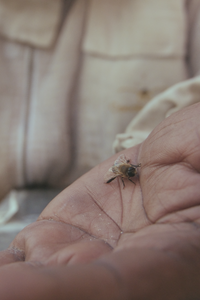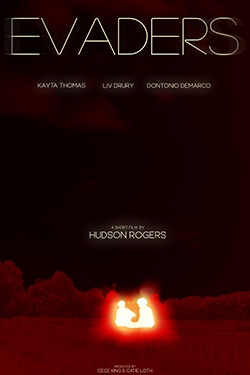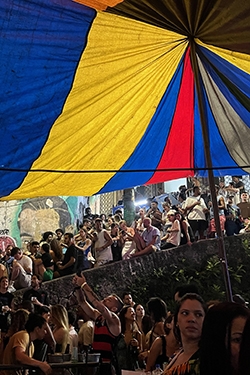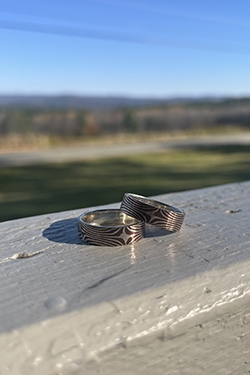

Related Links
Hop Funding OpportunitiesHere are a few of the projects supported by Hop funding opportunities.
Robert Dance '77 Arts Initiative Fund
Bee Well, Brandon Mioduszewski '25
Describe your project.
Bee Well journeys into the lives of beekeepers in rural New Hampshire and Vermont, illuminating their vital role in safeguarding bee health and populations. But beyond the science and stewardship, the film reveals a deeper bond—how the resilience and harmony of bees provide solace, emotional renewal and even spiritual healing to the very people who care for them. Learn more at brandonmioduszewski.com/bee-well
What did you gain from your experience?
Being able to independently direct, produce and film Bee Well with the financial and institutional support of the Hop has significantly improved my confidence and technical ability as an independent filmmaker. Being able to manage many different aspects of the filmmaking process has made me more confident about my filmmaking abilities and excites me for the films I will continue to make in the future.
EVADERS, Hudson Rogers '25
Describe your project.
Queer genre films remain scarce despite a large audience. This deficit inspired me to create a queer, dystopian Romeo and Juliette story, EVADERS. I created a film I longed for in high school—one that offered a connection to the queer community without confining queer characters to painful lives. With EVADERS, I aimed to defy this narrative, creating resilient queer characters. Inspired by Ryan Coogler's Black Panther and its use of Afro-futurism to amplify representation, I strive to bring similar innovations to queer filmmaking. EVADERS has the potential to redefine a new understanding of queer filmmaking, expanding its reach beyond traumatic representations.
What did you gain from the experience?
Throughout the process of its development, I have never learned more. I had the privilege of not only working with over ten different Dartmouth students, whom I am sure I will work with for the rest of my life but I also had the opportunity to work with editor Mel Mel Sukekawa Mooring, a nonbinary editor whose recent film The Stroll premiered at Sundance. Having the opportunity to further hone my collaborative and artistic skills in a way that is applicable to the professional film industry has been life-changing. Moreover, having a completed product that can be used to show alongside the feature-length script I have written has opened many doors for me, and I will forever be grateful.
The Dalvin Polk Fund for the Arts
Samba & Communities, Loane M. Bougeunnec '25 & Emma L. Ratchford '25
Describe your project.
Samba & Communitas brings readers to Rio de Janeiro and Salvador in Brazil to study the dynamics of samba, community, history and the commercialization of art. This project was born out of our shared interest in art, religion, cultural theory and Latin America; each discipline brought its own nuance to our project. Though we originally intended to study how samba fosters community amongst young Brazilian artists, writing a multi-medium article in order to increase creative engagement at Dartmouth, our project took many turns. Upon beginning field research, conducting interviews and acknowledging our position as outsiders, we became interested in whether and how the commercialization of samba impacts its existing communities and the art itself.
What did you gain from the experience?
As outsiders ourselves, this research not only taught us about samba but also urged us to explore our positionality with integrity and transparency in order to learn about how culture is presented to outsiders, how to connect and interview across cultures and languages, and push our own artistic journeys. Finally, we took away from the trip many professional lessons as well; most notably, excitement for future music, dance and film projects to come, a sense of comfort working in new and unstructured environments, and a desire to incorporate the arts into our everyday lives in a more intentional way.
Natural Patterns in Mixed Metals: Exploring Patterning Techniques of Mokume-Gane, Theodore Castellini '24
Describe your project.
I did a deep dive into the history and technique of a Japanese metalsmithing procedure called mokume-gane. Mokume-gane closely translates to "wood grain metal," and involves laminating different metals into a single piece of workable material, and manipulating those layers through shaping and material removal in order to reveal different patterns formed during the process.
What did you gain from the experience?
I gained valuable skills that can translate to other areas of my trade, including forming cold connections between components, acid etching and a new comfort with metal carving tools. I made several pieces with this material, from rings, earrings and chains to larger things like lighter cases. I continue to design and create more with mokume-gane as I continue developing my own practice as a jeweler and metalsmith. Overall, this project has probably been the most impactful event of my professional career as a metal artist. The knowledge, skills, tools and materials I accessed through this project will continue to benefit me for years, and I have the Hop funding opportunities to thank for that.



